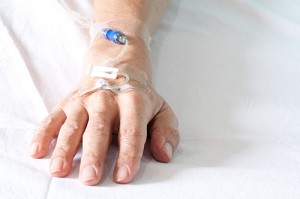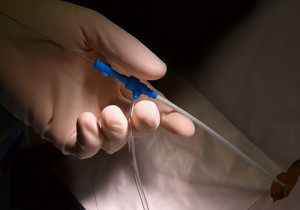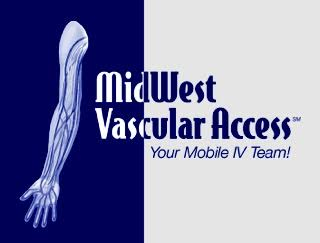Caring for your PICC line: What Patients Need to Know
 Peripherally inserted central catheter is a form of IV access. The catheter is inserted in a vein usually located in the arm with the catheter tip terminating in a large vein close to the heart. While in the hospital, nurses will care for the PICC line. They will assess the insertion site, inspect the dressing, check for leakage, perform flushing maintenance and act according to the outcomes. The PICC can be a long term IV access device and patients may be discharged home with the PICC in place to continue with treatments instead of requiring additional hospitalization. Therefore, the patient must be informed of general PICC line care so he is comfortable with it and is aware of circumstances that require alerting healthcare professionals of possible complication.
Peripherally inserted central catheter is a form of IV access. The catheter is inserted in a vein usually located in the arm with the catheter tip terminating in a large vein close to the heart. While in the hospital, nurses will care for the PICC line. They will assess the insertion site, inspect the dressing, check for leakage, perform flushing maintenance and act according to the outcomes. The PICC can be a long term IV access device and patients may be discharged home with the PICC in place to continue with treatments instead of requiring additional hospitalization. Therefore, the patient must be informed of general PICC line care so he is comfortable with it and is aware of circumstances that require alerting healthcare professionals of possible complication.
Preventing Infection & Dressing Changes:
 A secure, clean and intact dressing is essential to prevent catheter migration and infection. The dressing should be changed every seven days or more if needed. It is often helpful if a friend or family member is taught how to change the dressing, even if home care is used, to insure the dressing remains dry as a moist dressing is the perfect breeding ground for infection.
A secure, clean and intact dressing is essential to prevent catheter migration and infection. The dressing should be changed every seven days or more if needed. It is often helpful if a friend or family member is taught how to change the dressing, even if home care is used, to insure the dressing remains dry as a moist dressing is the perfect breeding ground for infection.
When dressing changes are being done, insure that the anchoring devise, Biopatch and injection caps are also changed at that time.
Dressings should be inspected daily. If it is wet, soiled or leaking, it must be changed. Dressings should be removed by loosening the adhesive, using alcohol if necessary. Scissors should never be used due to the possibility of cutting the catheter in error.
Hands should be washed properly with an antiseptic solution prior to handling the catheter or supplies. Scrub hands thoroughly. Be sure to include the palms back of hands, fingers and spaces between them and fingernails. Rinse them with running water with hands pointing down so the water flows downward. Dry them with a dry paper towel.
Clean the catheter caps with alcohol swab pads prior and post each use.
Flushing & Catheter Care:
 The cathether must be flushed every 12 hours and after each use. This is required to prevent clogging of the catheter. Flushing is done with 0.9% normal saline and heparin. Some catheters, however, are considered “saline only”. They do not have clamps and do not require heparin for flushing.
The cathether must be flushed every 12 hours and after each use. This is required to prevent clogging of the catheter. Flushing is done with 0.9% normal saline and heparin. Some catheters, however, are considered “saline only”. They do not have clamps and do not require heparin for flushing.
If flushing is difficult, this indicates that the PICC is becoming blocked. If it becomes fully blocked, it may not be usable. Report this difficulty in flushing immediately so it can be declotted to regain full functional use.
The clamp of the catheter should be closed when not in use. If clamps are not present on the catheter, it is a “saline only” PICC lines which do not have clamps and do not require flushing with heparin following the flush with normal saline.
The PICC dressing should not get wet. It must remain dry to prevent infection. During bathing, the likelihood water will come in contact with the dressing is greatly increased. Therefore, the PICC should be covered with a waterproof covering such as plastic wrap to prevent this from occurring.
Blood pressure readings in the arm cannulated with the PICC should be avoided.
The arm with the PICC line must not be babied. Normal use, in fact increases blood circulation in that arm. This aids in carrying medications to the heart for systemic circulation. However, strenuous work, lifting objects greater than ten pounds, or repetitive motion should all be avoided.
Never pull on the catheter. Protect the lumens so they do not inadvertently get caught or tugged on.
Inspect the site daily for any irregularities, such as swelling, redness, leakage or pain. If any irregularities or complications are noted, report them to a healthcare professional immediately.
If the catheter breaks, whether bleeding does or does not occur, do not panic. Using sterile gauze, apply sufficient pressure at the site so it is tightly and well covered and immediately report this to the physician. Maintain pressure on the site at all times.
More on “Preventing Infection for Patients and Family Members”
Basic Principles of Vascular Access
MidWest Vascular offers a three hour didactic course at a location of the facilities choice for their staff. MWVA will cover topics that the facility really sees a need internally so that if a facility knows they have had issues with something such as catheter dressing changes, we can come in and show the staff the proper way to change a dressing, the correct intervals in which a dressing should be changed, and particular indications to watch for at the insertion site of your patients central catheter. Topics covered in the BPoVA course include but are not limited to, proper flushing protocols, dressing changes, catheter identification, legal ramifications for improper vascular access usage, securement devices, medications and their proper devices to be infused through, and much more!
MWVA can also help your facility develop an internal policy for vascular access and the care and maintenance for your devices to make sure that they are used to the utmost efficiency to reduce complications for both the patient and the facility. Policies include but are not limited to flushing and maintenance protocols, IV access placements, admission algorithm for quicker IV access for your patients, port-a-cath access policy and procedures, and many more! MidWest Vascular is now offering three hours free BPoVA with new contracts, give us a call to find out more.
Hospital Admission IV Access Algorithm
MidWest Vascular has developed an admission IV access algorithm to help facilities of all sizes get their patients quicker access to the proper IV access so that they are able to receive the proper medication sooner and ultimately be discharged quicker from the hospital because of fewer missed dosses of their IV therapy. This flow chart covers the full range of vascular access devices to be one of the most comprehensive algorithms for proper device placement on the market and has seen great success in facilities of all sizes in reducing the number of needle sticks they experience and a reduction of phlibitis because of the placement of a proper device allowing for the patient to receive their medication in comfort. Help your patients experience a satisfying and shorter stay because of early preperation and quicker care!
Call to inquire as to how MWVA can help your facility implement an admission algorithm today!
